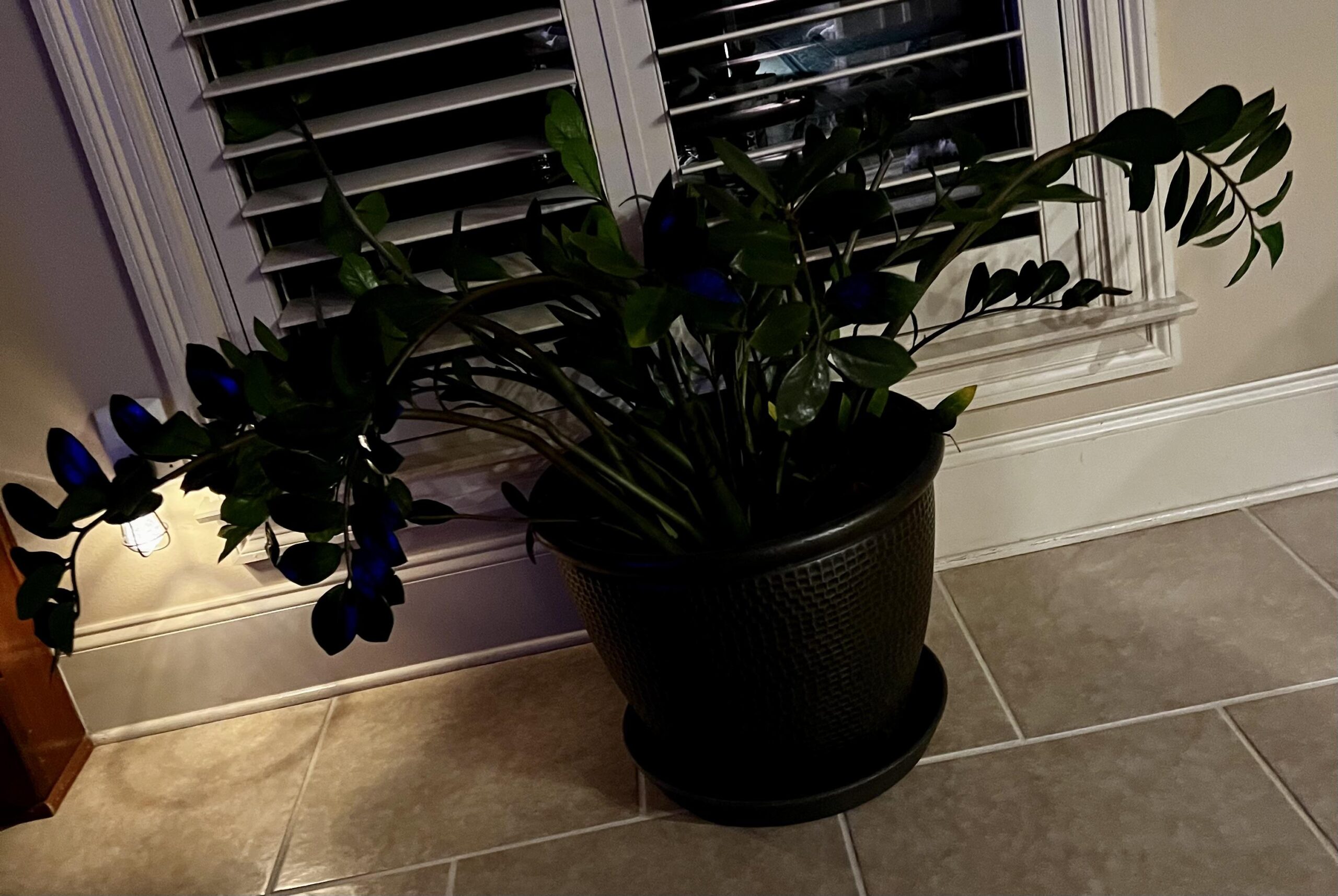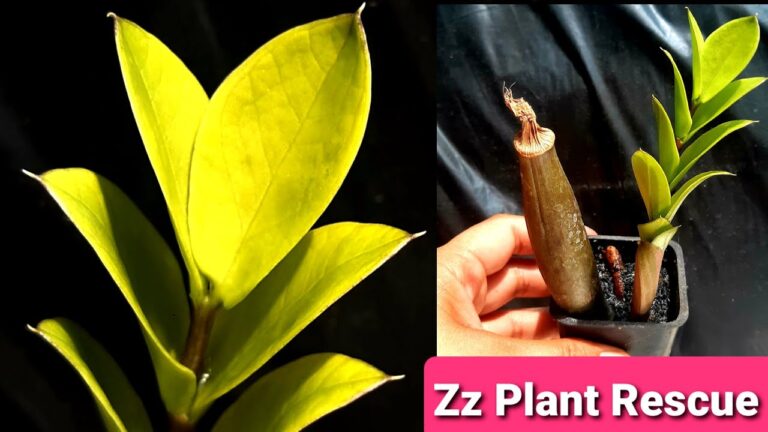Understanding ZZ Plant Watering
Ideal Watering Frequency
I give my ZZ plant a drink every week or two, letting the top layer of soil get crispy between sips. When the chilly months roll in, I stretch it to every 2-3 weeks since the plant goes a bit lazy on the water needs. Summertime means a nudge more often. But let’s not get carried away—overwatering’s the fastest ticket to root rot.
ZZ plants, also dubbed the “camels of houseplants,” don’t fuss much about water. When I do water, the soil gets a good soak before letting it drain out completely—no wet feet allowed. If my plant starts looking like it’s had a rough night out (droopy or yellow leaves), it’s usually telling me “I need a drink,” so I tweak my schedule.
Here’s a quick reference I use:
| Season | Watering Rhythm |
|---|---|
| Summer | Every 1-2 weeks (with a tad more) |
| Winter | Every 2-3 weeks (a little less) |
Watering Techniques
Here’s how I keep my ZZ plant happy and hydrated:
-
Sunlight and Surroundings: The ZZ plant is happy in bright, indirect light but isn’t fussy and can manage in shady spots. If I can sneak it in some soft morning rays, I do. Letting it simmer in the sun too long, though, is a no-go.
-
Potting Needs and Drainage: I pick out a mix that lets water zip through—usually with bits of perlite, vermiculite, or pumice. Pots with drain holes are a must to sidestep soggy bottoms.
-
Checking Moisture Levels: Before I water, I do the ol’ finger test—press it about an inch deep in the soil. If it’s dry, then it’s time for a splash.
-
Plant Origins: Knowing ZZ plants come from rocky, dry places in East Africa helps me remember their laid-back watering style. They’ve got thick, waxy leaves that hoard water, making them champs in dry spells.
For a deep dive into different types of ZZ plants, swing by our piece on zz plant varieties.
Sticking to these watering tricks keeps my ZZ plant living its best life, dodging pitfalls like root rot. Curious about the right drainage and soil? Check out our article on zz plant potting soil.
Factors Impacting Watering Needs
Keeping your ZZ plant happy and looking sharp involves knowing what messes with its thirst. Light, temperature, and humidity all play a big part in how often you grab the watering can.
Light Levels Influence
How much light your ZZ plant gets affects how often it needs a drink. Bright light will make it drink up more, while low light puts it on a sort of water diet. If it’s bathing in a lot of light, it’s gonna want more water. Less light means less water. Simple enough, right?
| Light Condition | Watering Frequency |
|---|---|
| Bright, Indirect Light | Every 2-3 weeks |
| Low Light | Every 4-6 weeks |
ZZ plants love being in bright, but not direct, sunlight. They can chill in low-light spots too. A dab of morning sun for a couple of hours can perk them up, but too much direct sun can give the leaves a bad sunburn. More light tricks? Check out our guide on zz plant light.
Temperature and Humidity
Then there’s temperature and humidity, throwing their hats into the watering ring. These plants like it between 60-75°F. They can deal with cooler or warmer days, but wild swings in temperature or getting hit by drafts can stress them out.
| Temperature Range | Watering Frequency |
|---|---|
| 60-75°F | Every 2-3 weeks |
| Below 60°F or Above 75°F | Every 4-6 weeks |
Humidity sneaks in as another factor. In dry, warm places, your ZZ plant might need water more often because what you’ve poured disappears faster. When it’s more muggy, you can lay off the watering.
| Humidity Level | Watering Frequency |
|---|---|
| Low Humidity | Every 2-3 weeks |
| High Humidity | Every 4-6 weeks |
Once you get the hang of how light, temp, and humidity tweak your ZZ plant’s water needs, it’ll stay healthy and green. For more info on keeping your plant in top form, check out our write-ups on zz plant humidity and zz plant temperature tolerance.
Keeping Your Plants Happy and Hydrated
Why You Need the Right Soil
Alright, so let’s talk about one of the most beautiful green buddies you can have — the ZZ plant. Now, these guys aren’t too fond of having their feet wet. You have to get the hang of using soil that lets water flow and doesn’t let it linger, or you’ll end up with root rot, and nobody wants that sad plant funeral.
Mix your soil with stuff like perlite or sand. According to the folks over at Cafe Planta, that’s a recipe for plant happiness. It lets the water take a hike while giving your ZZ plant roots a cozy home to grow in.
What to Toss Into the Soil Mix
| What Goes In | Why It Rocks | How Much |
|---|---|---|
| Potting Soil | Feeds your plant nutrients | 70% |
| Perlite or Sand | Drains the swamp | 30% |
| Vermiculite or Pumice | Adds breathing room | Optional (up to 10%) |
Getting this soil mix right keeps the chances of root rot low. Want more soil deets? Check out our guide on zz plant potting soil.
Picking Out the Perfect Pot
Now, even with the perfect soil, there’s something else you’ve gotta nail — the pot! Make sure it’s got enough holes in the bottom to leak out extra water, or else you’re just setting up a water park for the plant roots, and that isn’t nearly as fun as it sounds.
The smarty-pants at Greg App suggest getting a pot with holes for good drainage. When you water, make sure the saucer (that thing under your pot) isn’t drowning. Empty that bad boy regularly so your ZZ doesn’t start sipping on the leftover pool.
When you next swap pots, sizing matters. Too big? You’ll have a soggy mess. Too small? Your plant’s gonna feel a little claustrophobic. Need more tips? Go check out our rundown on zz plant pot size.
What Makes a Good Pot?
| Pot Features | Why It Matters |
|---|---|
| Drainage Holes | Keeps water from collecting |
| Right Size | Accommodates growing roots |
| Material (e.g., Terracotta) | Lets roots breathe easy |
With the right mix and the right pot, your ZZ plant will stay green and happy without any soggy drama. For more hacks on plant care, slide over to our articles about zz plant root rot and zz plant repotting. Got questions? We’ve got answers!
Signs of Overwatering
You know, it’s pretty easy to go overboard with watering when it comes to the ZZ plant. Spotting the signs of too much H2O early can keep your plant in tip-top shape.
Symptoms of Overwatering
Figuring out if you’re drowning your plant ain’t rocket science. Here’s what to watch for:
- Yellowing Leaves: If your plant’s looking a bit jaundiced, it might be gasping for air down below. Those yellow leaves mean the roots are suffocating in too much water (Florasense).
- Soft and Mushy Stems: When the stems start to feel like a soggy noodle, your plant’s had enough water, and it’s breaking down from all the moisture (Cafe Planta).
- Yucky Smell: If the pot starts smelling like old gym socks, it’s time to check for root rot. That smell is a dead giveaway that your soil’s gone sour (Cafe Planta).
| Symptoms | What’s Up |
|---|---|
| Yellowing leaves | Roots drowning in water |
| Soft and mushy stems | Too much water, tissues breaking down |
| Foul odor from soil | Rotting roots |
Need more info? Hop over to zz plant leaves turning yellow.
Preventing Root Rot
Root rot ain’t just a made-up boogeyman for plants; it’s real and as nasty as it sounds. Here’s how to avoid it:
- Pick the Right Soil: Go with soil that drains well. Mixes with goodies like perlite and pumice will do wonders (Greg App). Curious about dirt? Check out zz plant potting soil.
- Choose the Right Pot: Make sure the pot lets water out — drainage holes are your plant’s best friend. Avoid saucers that hoard water (Greg App). More pot talk at zz plant pot size.
- Check Soil Dampness: ZZ plants are tough cookies, going weeks without a sip. Water when the top inch feels dry. For more tips, pop over to zz plant indoor care.
- Skip Overhead Watering: Just aim for the base while watering. Leaves and stems don’t need a shower, which could lead to rot.
Think you’ve got a rot problem? Might be the perfect time for a replant. Check out the step-by-step in our zz plant repotting guide.
Nail the watering routine and snag your ZZ plant all the love and care it deserves. You can look into tidbits like zz plant new growth and zz plant light to keep it perky and blooming.




